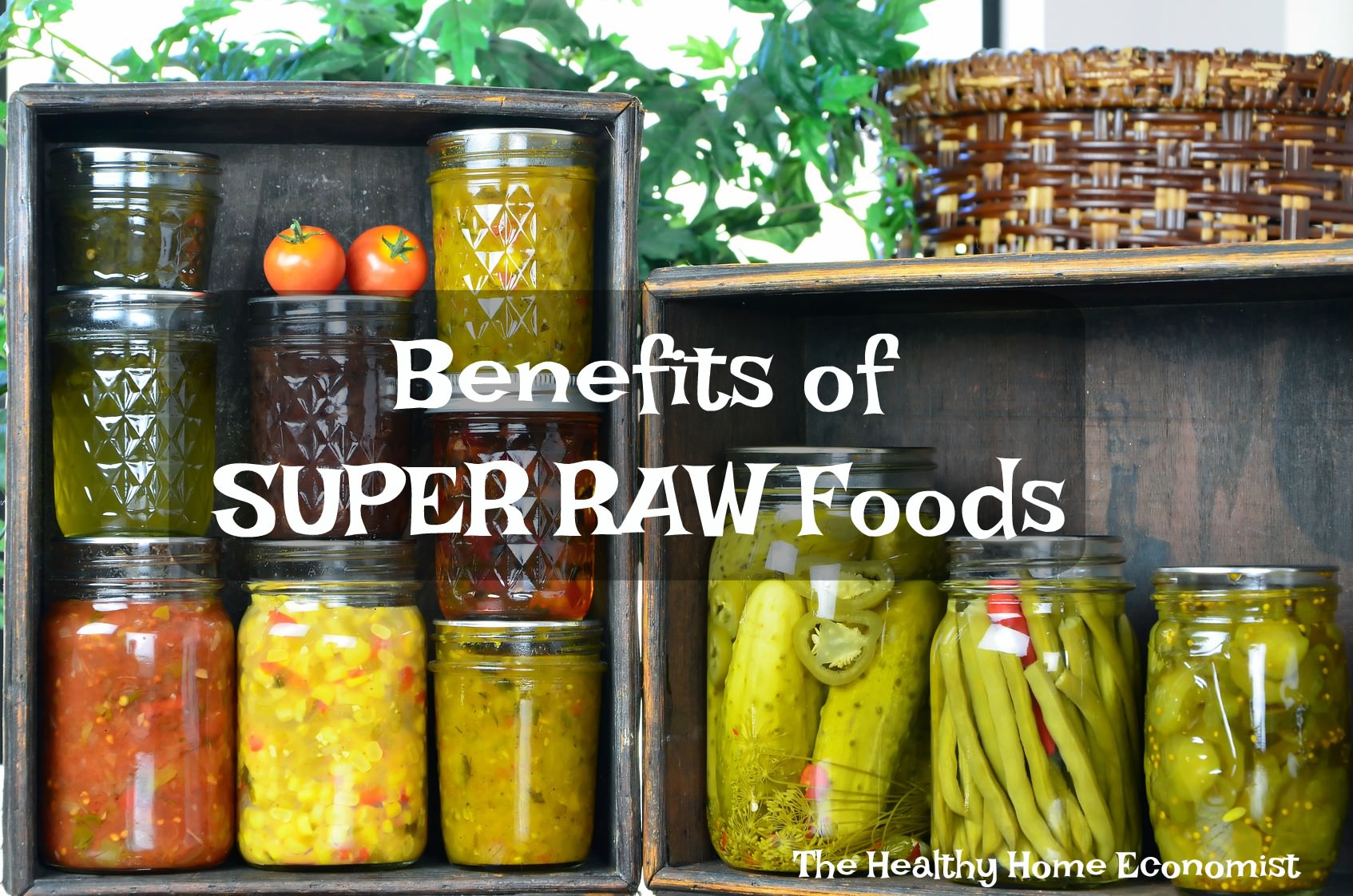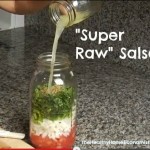 At the annual Wise Traditions Conference, many attendees enjoy delicious traditionally based meals including the wonders of super raw food, aka fermented fruits and vegetables, for the very first time.
At the annual Wise Traditions Conference, many attendees enjoy delicious traditionally based meals including the wonders of super raw food, aka fermented fruits and vegetables, for the very first time.
Prior to the Industrial Revolution, home food preservation was accomplished without the aid of canning, refrigeration or freezing with lacto-fermentation the common technique employed to store raw foods for consumption during times of scarcity or the winter months.
Even milk was not typically consumed in a fresh state and was usually eaten as yogurt, kefir and cheese or clabbered and then separated into curds and whey.
The process of lacto-fermentation involves harnessing beneficial lactic acid-producing bacteria naturally present everywhere in our environment (yes, it’s crawling all over your skin right now!) to initiate the digestion or breaking down of milk sugar, known as lactose, and milk proteins like casein.
When enough lactic acid is produced by these friendly bacteria and fermentation is complete, milk is protected from spoilage for several days, weeks or even years as is the case with aged cheese.
Meat can be preserved by lacto-fermentation as well. Hard, aged sausages, such as traditional salami, are lacto-fermented foods.
The process of fermentation works in a similar manner with plant foods, transforming cabbage into sauerkraut and cucumbers into pickles. While not traditionally lacto-fermented, fruit can also be transformed into chutney and marmalade using the same process.
Lactic acid produced by beneficial bacterium ubiquitous in our environment and present on the surface of all plants and animals works to preserve food by inhibiting putrefying bacteria. Traditional cuisines from around the world prized lacto-fermented foods and beverages for their medicinal properties as well as delicious taste. Most traditional cuisines included at least one fermented food or beverage with every meal, which worked to improve digestion and nutrient absorption.
This incredibly health promoting traditional food preparation technique has been all but lost today with an epidemic of digestive disorders the inevitable result.
Why?
Regular consumption of traditionally fermented foods and drinks promotes the growth of healthy flora and overall balance in the intestines. A 1999 study published in the Lancet found that consumption of lacto-fermented vegetables in children was associated with low rates of asthma, skin problems and auto-immune disorders in general.
Lacto-fermented foods are rich in enzymes as well as beneficial bacteria and are ideally served as condiments with a meal that also includes cooked foods. The enzymes in lacto-fermented or “super raw” foods more than compensate for the enzymes lost in foods that are cooked.
One of the easiest lacto-fermented raw food to get started with is salsa. It is well accepted by family members even when fermented and simple to make. You can make it as mild or spicy as you like simply with the omission or addition of various types of peppers to suit your taste.
Try this variation if you are ready to turn back the clock in your kitchen!

Super Raw Salsa Recipe
Salsa recipe that is lightly fermented to transform the raw veggies into a super raw state loaded with additional probiotics, enzymes, and nutrition
Ingredients
- 4 tomatoes medium size, skins removed, preferably organic and/or heirloom
- 2 onions small size, chopped, preferably organic
- 3/4 cup chili pepper chopped, mild or hot, preferably organic
- 6-8 cloves garlic optional, peeled, finely chopped, preferably organic
- 1 bunch cilantro chopped, preferably organic
- 1 tsp dried oregano preferably organic
- 2 lemons juiced, preferably organic
- 1 Tbl sea salt
- 4 Tbl liquid whey
- 1/4 cup filtered water
Instructions
-
Dip tomatoes in pan of boiling filtered water for 5 seconds each - skin peels right off. Seed, dice and/or chop all vegetables. Juice the 2 lemons.
-
Mix all raw food ingredients together in a bowl and then transfer to a quart or half gallon sized wide mouth mason jar. Press down gently with an appropriate instrument so liquid covers the vegetables. Add fermentation weight if desired to discourage cultured food mold.
-
Leave at least 1 inch at the top. Cover tightly and leave at room temperature for 2 days and then refrigerate.
-
Super raw salsa will last a month or two when made in this traditional manner.
Recipe Notes
3 Tbl additive free organic lemon juice may be substituted for the fresh lemon juice.
Do not substitute powdered whey for the liquid whey. Alternatively, add an additional Tbl of sea salt if no liquid whey is available.
Another option is using a cultured food starter instead of liquid whey.
Sarah, The Healthy Home Economist
Sources
Nourishing Traditions Cookbook
Atopy in children of families with an anthroposophic lifestyle








I loved the ferments at the conference. My favorite was the fermented apple butter which most people would not even know was fermented even though it was for 5 days. The couple supplying all the ferments at this years WAP conference was Fabferments. This young couple not only makes these delicious products but grows most of their ingredients on their farm. If you don’t want to make your own order some of theirs, they were all great!
Help! I’ve read I can pour off the liquid from store bought yogurt and use it for my whey when ready to ferment foods. So I’ve been accumulating some in the fridge. Does go bad after a while? Will it work for me?
my gut is that it probably won’t work because the yogurt was probably cooked at a high temperature and the bacteria might be dead. but you can try it, it certainly won’t hurt you. but it might not be helping you either. why not just use the salt?
Yum! LOVE raw salsa. I have never made it with oregano before. Will have to give that a try. Thanks for sharing! <3
You started this page with Indianapolis next year. Are there any dates yet to start planning? I’m in Michigan so this is going to be doable.
Hey Sarah,
You mentioned that this is the way people would prepare foods before refrigeration… But then you say to refrigerate it. How did that work before? What would people do with the food and how long would it last if not refrigerated?
I live in Florida and don’t have a cool cellar. If you have a cool, dark cellar, you can store them there instead. I gave these instructions to cover all climates.
I’m curious what you think of the “new” probiotic jars and pickle-it lids that produce an ANaerobic system and use NO whey at all. Just went to a fermenting class by a VERY knowledgeable lady who strictly uses these and recommends them (also has a friend with a financial vested interest:D)
what say you??
You don’t need special jars for lacto-fermentation. Traditional societies certainly didn’t have them! Mason jars are just fine and all I’ve used for over 12 years.
those pickle-it things are danged expensive, too!
actually, I was thinking of making one of those fancy jars at home. I think brewing stores sell those seals. I don’t know why they cost so much.
If I don’t have whey, what else can I use? I have kombucha, water kefir, and I bought a jar of Kimchi. Would the kimchi juice work?
Wehn short handed I skip the whey by adding another TBL of unrefined sea salt. insure liquid covers the salsa so add filtered water to insure it does.
John, that won’t make it too salty?
Hmm you raise a good question but no it does not by my tastes. Also, I believe in the nourishing traditions cook book it suggests same. Make sure not to use refined salt.
if you are using unrefined salt, it is not too salty in my opinion. now if you were to do the same thing with morton’s table salt, yuck!
Does the oregano serve a purpose other than flavor? Strangest thing, but I have an expectant dil who has decided she is allergic to oregano and I would like to leave it out for her. Her identical twin, also my dil, is allergic to dairy (not just lactose intolerant) and berries but even she can eat oregano!
I use a recipe that is very similar. It does not use oregano. I do believe the oregano is only for flavor.
not to seem too nosy, and not bc it’s exactly on topic…but you have 2 daughters-in-law that are twins?? wow! sounds like an interesting family 🙂
If you hate the taste of whey in your vegetable fermentation, you can use a vegetable starter culture, juice from another ferment, fermented peppers, etc. The bacteria from vegetables are all different from dairy, so the flavor is different to. To me it’s not as sour and is crisper and fresher tasting. So if you hate fermentation because of whey, it’s another way to enjoy them and broaden your bacteria spectrum.
Hi Sarah!
I can’t wait to hear more about your weekend, and next year I can DRIVE to Indianapolis! 🙂
I want to try this salsa, does it end up with a strong tang? Just wondering if the kids will go for it?
Thanks,
Kel
You can double the salt and leave out the whey if you like and that should produce a zero tang flavor for you 🙂